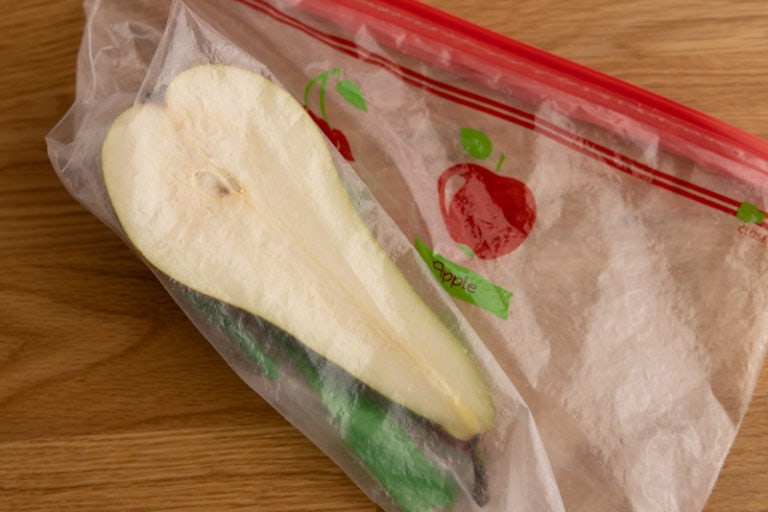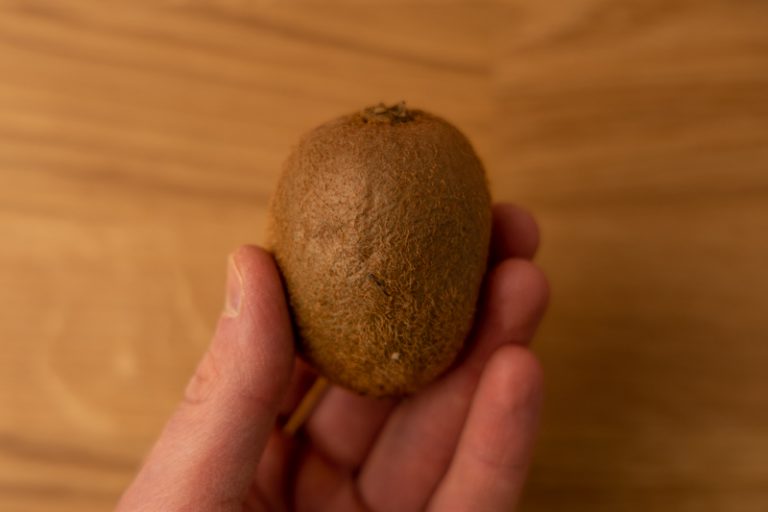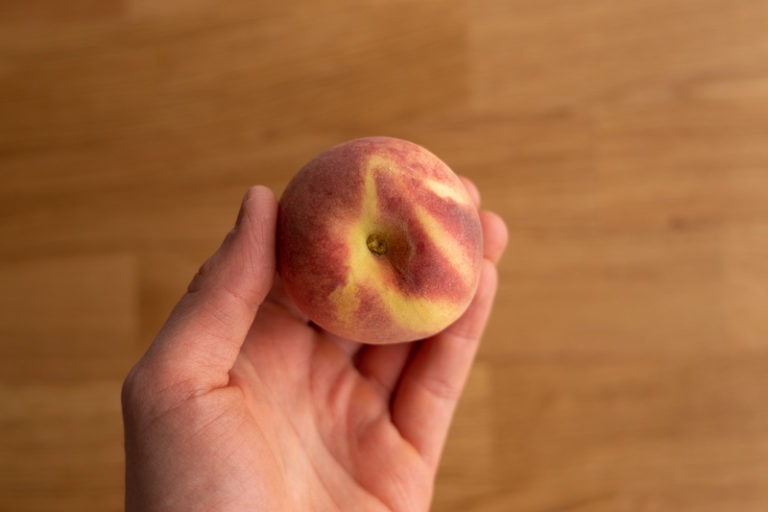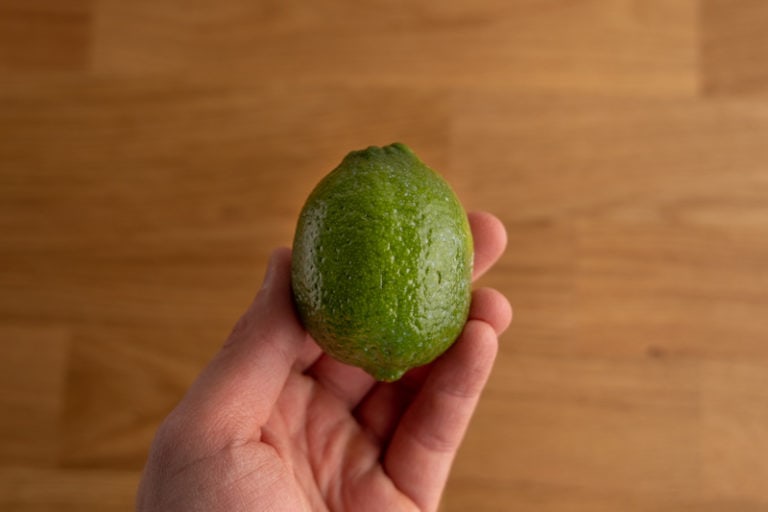Can You Freeze Limes? [4 Ways to Freeze Limes]
Here’s all you need to know about freezing limes. Learn what the options for freezing limes are and how to choose one that’s best for you.
Bought a bunch of limes and worried that some of them would go bad? Or maybe you have some unexpected leftovers that you don’t want to discard? Can you freeze limes?
You can freeze limes whole or cut them into slices or wedges. If you only need the juice and zest, you can process your limes and freeze the juice and zest separately, making them available whenever needed.
In other words, you have four ways you can deal with your excess limes, and every one has its pros and cons. But before we get to choosing which option is best for you, let’s talk about whether or not you even need to freeze them.
I don’t yet have any photos for this article, but I have plenty in my article about freezing lemons. Since freezing those two works the same way, feel free to check out that article: Can you freeze lemons?
Before You Freeze Limes
Whole limes can last for at least 3 to 4 weeks in the refrigerator. If you go with the best way to store limes, which is refrigerating them in a freezer bag, you can even get an extra week or more of good quality.
In other words, whole limes have a pretty long shelf life, so if yours are reasonably fresh, you still have a couple of weeks to use them. And, as you might imagine, using a fresh lime is a more pleasant experience than using one that’s been frozen and defrosted (more on that in a moment).
Plus, you don’t have to bother with freezing them, which is excellent news for the lazy people out there (including yours truly).
Unfortunately, if you already cut up your limes, they only keep for a few days, so it’s best to freeze them right away if you don’t have a plan to use them.
Next, let’s cover how freezing affects limes.
Do Limes Freeze Well?
Limes soften after freezing and thawing. You can still juice or zest them just fine, but they don’t work well in dishes that don’t involve cooking or baking.
Those defrosted limes, wedges, or slices are soft and squishy, and that means using them as a garnish or leaving them on the table for your guest to get some extra lime juice is out of the question.
That leaves you with various cooked and baked dishes, where the difference between fresh and defrosted limes is difficult to spot.
Alternatively, you might decide to juice and/or zest your limes if you don’t need the fruit itself. Both juice and zest freeze fine, so if that’s what you usually use in your cooking, you might as well process the limes now.
Knowing that, let’s talk about all the freezing options you have and how to choose the best one for you.
Choosing the Freezing Option for You
If you don’t need the fruit itself but only need the juice or zest, it’s best to work through your leftover limes and juice and zest all of them. Then, you can freeze both separately and use those whenever needed.
If you’re not sure what you will do with those limes, freezing them whole is the best option. You can still juice or zest them or cut them into slices or wedges if need be. In other words, this option gives you the most flexibility.
One thing to remember is that slicing a defrosted lime isn’t as easy as cutting a fresh one. That’s how working with soft fruits and veggies is in general.
Last, if you know you need wedges or slices, you might as well cut up your limes and freeze them this way. That will allow you to easily grab a couple of pieces whenever needed.
That’s the overview – read through all the methods below to learn more about the details.
How to Freeze Whole Limes
Freezing a whole lime is as easy as it can be. You grab a freezer bag, place the lime or limes in it, squeeze out the air, and place the bag in the freezer.
If you find it helpful, you can label the bag with the name and date, but unless your bag is opaque, it’s pretty obvious what’s inside.
Those limes should retain decent quality for at least 3 to 6 months in the freezer. And by decent, I mean they’re going to be pretty soft once thawed, even if they sat in the freezer for only a day or two.
Defrosting Whole Limes
To defrost a frozen lime, leave it overnight in an airtight container or freezer bag in the fridge. Depending on the size, a single lime needs at least 3 to 5 hours, maybe up to 10 if it’s a huge one.
To accelerate the process, you can submerge that lime in cold water (still in the fridge), which should shorten the defrosting time by a third or so. If doing so, go with a container instead of a bag, just to ensure there aren’t any leaks.
Now, if you want to zest that lime, do that before you start defrosting it. I didn’t try it, but I’ll bet dollars to doughnuts that zesting a hard frozen lime is much easier than zesting a soft defrosted one.
Usage
Freezing a whole lime allows you to use it however you want, including slicing, zesting, and juicing the fruit. The only downside is that defrosting one takes quite some time, which means you need to plan ahead.
Once again, the lime will be super soft after thawing, so slicing it might be a bit cumbersome but still doable. And use those slices in a cooked or baked dish, not to decorate your mojito or margarita.
How to Freeze Lime Slices and Wedges
Here’s how you freeze lime slices and wedges:
- Prep. Cut your limes into slices or wedges, and consider removing some of the white pith if you plan to do that at some point. If you need the zest of those limes, zest them before freezing and freeze the zest separately (instructions below).
- Pre-freezing. Grab a cookie sheet and line it with baking paper or a silicone mat. Next, spread the slices and wedges on it so that there’s no touching and they don’t freeze together. Once done, place the tray in the freezer for 2 to 3 hours, or until the pieces freeze solid. Or leave everything in the freezer overnight.
- Transfer to a freezer bag. Grab the baking sheet from the freezer and transfer the fruit pieces into a freezer bag or airtight container. Squeeze out the air if you’re going with a bag, and seal everything tight. Label it with the name and date if you like.
- Put the packaged slices back in the freezer.
That’s it. The outlined process should feel quite familiar if you’ve ever frozen cut fruits.
Pre-freezing allows you to scoop a couple of frozen slices or wedges from the bag without defrosting the contents of the whole bag. You can skip that step if you don’t care for that because a single pack contains exactly as many lime pieces as you need for a single dish.
Frozen lime slices and wedges should retain decent quality for at least 3 to 4 months in the freezer, but the sooner you use them, the better.
Defrosting Lime Slices and Wedges
There are two ways of working with frozen lime slices and wedges:
- Defrosting them in the fridge. Place the wedges and slices you need in a freezer bag or container and leave them overnight in the refrigerator. They should be thawed within 2 to 4 hours (depending on size and quantity) and definitely ready to use in the morning.
- Using them frozen. If you need those slices to top your fish or cake (before baking), you can usually skip defrosting and place them where they need to be while still frozen. The oven or the stove will take care of defrosting and cooking the fruit slices in minutes.
Obviously, you can defrost frozen lime slices and wedges even if you’re using them in cooked and baked dishes. It’s just quicker to skip the process.
Usage
Frozen lime slices work great in baked dishes (like lime baked salmon) and baked goods. Or you can use them to make limeade if you like.
As you might imagine, zesting or juicing slices doesn’t make sense, but if you’ve opted for wedges, both should still be doable.
Once again, the slices will be soft after defrosting, so using them in garnishes is far from ideal.
All in all, I suggest freezing limes in slices or wedges only if you have a plan on how you’re going to use them after.
If you don’t, it’s probably better to freeze whole limes to retain all the options. Or juice or zest them, as both are much easier to use and freeze perfectly fine.
How to Freeze Lime Juice
Freezing lime juice is as simple as it gets:
- Juice your limes.
- Decide on the packaging. If you’re going to use all the juice you have in one go, you can pour it into an airtight container. But if you don’t, it’s better to freeze it using an ice cube tray (or a muffin tin if you need larger portions). This way, you’ll end up with a bunch of cubes you can use whenever required.
- Pre-freeze. If you go with an ice cube tray, place it in the freezer for 2 to 3 hours, or until the cubes freeze solid. Otherwise, skip this step.
- Freeze. Transfer the frozen lime juice cubes into a freezer bag or airtight container, and place the frozen juice in the freezer. Label the bag or container with the name and date if needed.
That’s the best way to freeze lime juice, and you can use the same process to freeze orange juice or freeze lemon juice.
Frozen lime juice should retain good quality for at least six months in the freezer, if not more. As usual, the sooner you get to it, the better.
Defrosting Lime Juice
When working with frozen lime juice, you have a couple of options:
- Defrost it in the fridge. The process should take anywhere between an hour and 8 hours, depending on the volume.
- Defrost on the stove. If you need the juice defrosted in a couple of minutes, thawing it on low heat on the stove is your best bet. A couple of minutes of warming, and it should be nice and defrosted, no matter the amount. Remember to use lime juice defrosted this way immediately, and discard any leftovers.
- Use it frozen. You can usually skip defrosting the juice and throw it in frozen for smoothies and dishes cooked on the stove. This way, you don’t have to remember about defrosting it at all.
Usage
If the recipe calls for lime juice, you can always use one that’s been frozen and thawed instead of a fresh one. That means that all dishes that use lime juice are on the table.
How to Freeze Lime Zest
Here’s how you freeze lime zest:
- Zest your limes. Go with whatever technique you want, but remember that if you zest your limes into strands, they will most likely break at one point or another during the freezing process. Because of that, I suggest avoiding strands.
- Transfer the zest into a freezer bag or airtight container. A bag is usually a better choice, as it takes much less space in the freezer. Add a label with the name and date if you like.
- Freeze. Place the container or bag in the freezer.
That’s the easiest possible method of freezing lime zest, and it works perfectly fine to freeze any amount of zest you have.
For best results, use frozen lime zest within 3 to 6 months, but the quality shouldn’t be an issue even if it sits in the freezer for more than a year.
For more details, check out my article on freezing lemon zest.
Defrosting Lime Zest
Your lime zest will freeze together in the freezer bag, but you should be able to break it up and scoop as much as you need using a teaspoon. Just make sure you use a cold teaspoon and not your fingers so that the whole thing doesn’t defrost in the process.
In other words, you don’t need to defrost lime zest. If you scoop a teaspoon or two, just sprinkle it all over where it’s needed or add to whatever you’re cooking, and it’s going to thaw in a matter of minutes.
Usage
Like lime juice, you can use frozen lime zest exactly the same way you use fresh or store-bought lime zest, with no ifs or buts.
Rotten Records: Share Your Snap!
Caught some food past its prime? Upload your photo to “Rotten Records” and help others spot the signs of spoilage. Every image makes our food community safer and more informed!





